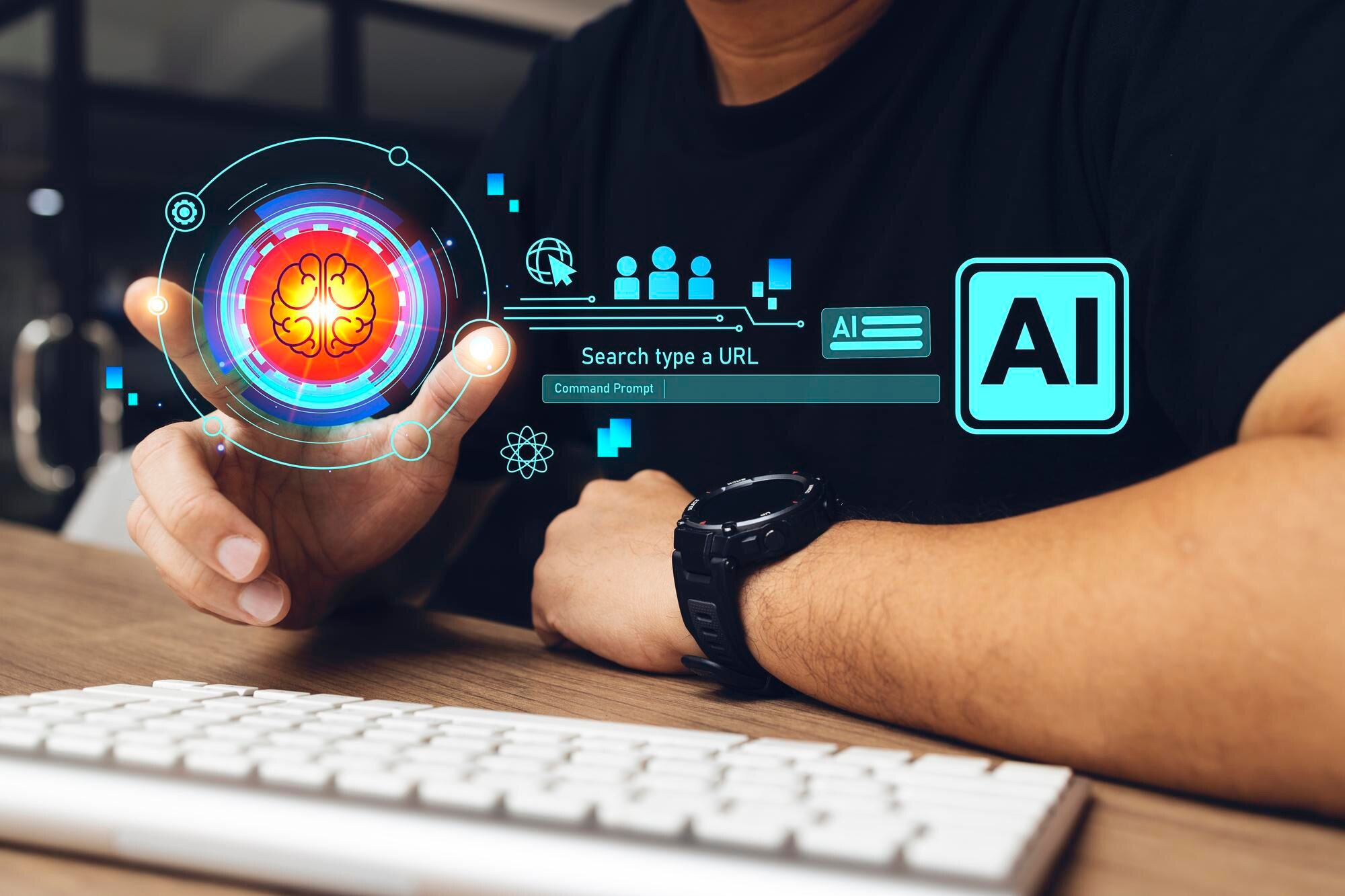Estimated reading time: 12 minutes
Key Takeaways
- These systematic processes and professional services validate, evaluate, and ensure the performance, fairness, reliability, and compliance of AI models throughout their development lifecycle.
- Comprehensive AI performance testing and AI quality assurance are business imperatives that limit risk and bolster user trust.
- Machine learning model testing employs techniques like holdout validation, cross-validation, and adversarial testing to confirm models generalise beyond their training data.
- AI quality assurance holds exceptional importance in regulated sectors such as healthcare, finance, and legal services.
- Automated AI testing and AI test automation provide tangible benefits, including rapid test-case generation, self-healing scripts, expanded coverage, and continuous testing throughout iterative development cycles.
- AI deployment testing ensures that models integrate smoothly with production ecosystems and sustain intended performance after release.
Table of Contents
Introduction
AI model testing services become increasingly crucial in the modern technology landscape. These systematic processes and professional services validate, evaluate, and ensure the performance, fairness, reliability, and compliance of AI models throughout their development lifecycle. As organisations across multiple sectors rely on artificial intelligence to drive innovation and efficiency, the need to confirm these systems operate accurately and consistently grows ever more pressing.
In a world where AI powers everything from clinical diagnostics to financial decision-making, comprehensive AI performance testing and AI quality assurance are not merely technical requirements, they are business imperatives that limit risk and bolster user trust.
Without careful testing, AI systems can produce inaccurate results, display biased behaviour, or fall short of regulatory standards, potentially triggering serious financial or reputational harm.
The escalating complexity of AI applications demands specialised testing approaches that extend well beyond conventional software methods, addressing the distinctive challenges created by machine learning models and other AI techniques.
What is AI Model Testing?
AI model testing, also known as AI model validation, is the detailed process of assessing AI models to verify they meet specified design requirements and perform optimally across key metrics such as accuracy, fairness, robustness, and scalability. This specialised form of testing extends far beyond traditional software practices to confront the specific complexities inherent in artificial intelligence systems.
AI model evaluation differs notably from conventional software testing in several critical ways
- Traditional software testing checks deterministic code against functional requirements, whereas AI testing assesses probabilistic outputs and predictive accuracy
- AI testing detects and mitigates bias across different demographic or operational groups
- The evaluation explores model behaviour under diverse, often unpredictable, real-world scenarios
- It confirms reliable decision-making despite variations in input data
Conventional software approaches cannot adequately address AI-specific challenges such as data distribution shifts, concept drift, or the often opaque logic behind machine learning decisions. For example, a model that performs flawlessly during development can produce markedly different outcomes when exposed to production data that diverges from its training set.
Machine learning model testing therefore employs techniques like holdout validation, cross-validation, and adversarial testing to confirm models generalise beyond their training data. These methods uncover potential failure modes that would escape ordinary quality assurance, making AI model testing an indispensable practice for any organisation that deploys AI.
Importance of AI Model Testing
Thorough AI model accuracy assessment underpins trustworthy AI applications. When AI systems deliver predictions or classifications with high accuracy and precision, stakeholders can rely on their outputs for critical decisions. Errors, however, can have far-reaching consequences, ranging from minor disruptions to catastrophic failures, depending on context. A flawed diagnostic system might misclassify illnesses, while an imprecise fraud detection algorithm could incorrectly flag legitimate transactions and erode confidence.
AI performance testing examines not just accuracy, but also efficiency and robustness at scale. It confirms that models handle varied workloads and operate smoothly under diverse conditions, from processing a handful of requests to managing millions of concurrent transactions. Performance testing answers questions such as: How quickly does the model process inputs? Does accuracy degrade when demand spikes? Can the system sustain consistent performance across different hardware configurations?
AI quality assurance holds exceptional importance in regulated sectors such as healthcare, finance, and legal services, where algorithmic decisions can have profound consequences. In these fields, continuous testing for accuracy, fairness, and compliance with sector-specific regulations and ethical standards is frequently a statutory obligation. Rigorous processes identify potential compliance issues before deployment, avoiding costly penalties and keeping systems within acceptable boundaries.
Comprehensive testing further contributes to holistic system reliability and efficiency by
- Revealing potential failure points before they affect end-users
- Sustaining consistent performance across varied operational environments
- Validating model responses to edge cases and unusual inputs
- Confirming that updates or retraining do not introduce fresh faults or degrade existing functionality
Methodologies for Effective AI Model Testing
Effective machine learning model testing embraces a broad set of techniques and best practices that examine systems from multiple perspectives. These methodologies guarantee that models operate reliably across disparate conditions and use cases.
Cross-validation and holdout testing form the foundation for measuring accuracy and precision. By partitioning data into training and validation sets, developers gauge how well models generalise to unseen data, a pivotal indicator of real-world performance. K-fold cross-validation extends this principle by evaluating the model against multiple partitions, producing more resilient performance metrics. This approach highlights overfitting issues where a model memorises training data rather than learning transferable patterns.
Performance evaluation relies on stress and load testing to gauge scalability under heavy demand. This stage involves
- Simulating escalating user loads to locate breaking points
- Measuring response times across diverse scenarios
- Testing concurrent processing capability
- Assessing resource utilisation during peak demand
Bias detection tests uncover discrimination or unfair outcomes across demographic groups or data categories. Analysts inspect whether the model delivers systematically different results for protected groups defined by gender, age, ethnicity, or other attributes, an essential step in ethical deployment.
Drift detection monitors changes in input data over time that may erode performance. As real-world data evolves, models trained on historical information can grow less accurate, a phenomenon called concept drift. Regular monitoring signals when retraining or recalibration is required.
Automated AI testing and AI test automation provide tangible benefits, including
- Rapid test-case generation through AI-assisted tools
- Streamlined test maintenance with self-healing scripts
- Expanded coverage surpassing what manual efforts could reach
- Continuous testing throughout iterative development cycles
AI lifecycle testing integrates validation within continuous integration and continuous deployment pipelines, ensuring constant scrutiny during development. Testing permeates every stage, from data preparation through model training, evaluation, deployment, and ongoing monitoring, forming a comprehensive assurance framework.
Different AI evaluation methods target distinct metrics according to model type and application area. Language models prioritise linguistic accuracy and cultural sensitivity, computer vision systems focus on recognition precision and environmental adaptability, while reinforcement learning agents require assessment of sequential decisions and reward optimisation.
Key Components of AI Quality Assurance
Comprehensive AI quality assurance involves several core strategies that collectively maintain safe, fair, and reliable operation in the real world. Each component tackles a specific dimension of quality, creating a layered safeguard.
AI model robustness testing measures resilience against challenging inputs, confirming dependable performance under suboptimal conditions. The process includes
- Introducing noise or corrupted data to mirror real-world imperfections
- Testing with incomplete information to evaluate handling of gaps
- Conducting adversarial examinations to expose vulnerabilities open to manipulation
- Validating performance across varied hardware configurations and operating environments
A robust system maintains acceptable output quality despite these stressors, supplying stable results even when inputs differ substantially from training scenarios.
AI bias detection promotes fairness and averts unforeseen discriminatory outcomes. Teams systematically scrutinise outputs across demographic segments to identify disparities. Effective bias detection demands
- Representative datasets encompassing diverse populations
- Quantitative fairness metrics that measure outcome variation between groups
- Qualitative inspection of edge cases and potential harm
- Reassessment as societal expectations and definitions of fairness evolve
Uncovering bias early permits mitigation before deployment, preventing reinforcement of existing inequalities or emergence of new ones.
AI compliance testing verifies alignment with legal, ethical, and sector standards, making sure systems operate within legitimate frameworks. As governments introduce regulations such as the EU AI Act and industries impose sector-specific requirements, compliance testing checks
- Data-privacy safeguards and consent management
- Transparency of decision-making processes
- Documentation covering model development and testing activities
- Conformance with standards and recognised best practices
These quality assurance elements enable organisations to foresee and limit risk associated with deployment, reinforcing the credibility and ethical standing of AI while sidestepping legal difficulties and reputational harm.
Applications of AI Model Testing Services
AI deployment testing ensures that models integrate smoothly with production ecosystems and sustain intended performance after release. This phase bridges laboratory performance with real-world operation and covers
- Functional integration with existing software and workflows
- Throughput under authentic production loads rather than laboratory simulations
- Processing of continuous data streams that may diverge from training distributions
- Graceful degradation when encountering unexpected inputs or resource constraints
- Post-deployment monitoring to detect degradation, drift, or security issues quickly
Industries including healthcare, manufacturing, retail, telecommunications, and public services now rely on formal AI model testing services to protect both customers and organisations. For example, a hospital deploying a triage model engages external testers to certify diagnostic accuracy on local patient demographics, confirm compliance with medical regulations, and establish monitoring to identify drift as treatment protocols evolve. A retail bank commissioning a credit-scoring model contracts testers to probe fairness across socio-economic groups, stress-test scalability during holiday spending peaks, and audit documentation for regulatory submission.
Choosing an AI Model Testing Partner
Selecting a testing partner demands attention to technical expertise, sector knowledge, and methodological rigour. Key factors include
- Demonstrated experience with the relevant model architectures and data types
- Independent testing frameworks that align with recognised standards
- Transparent reporting that clarifies both strengths and limitations
- Security protocols protecting sensitive data throughout evaluation
- Capacity to collaborate with in-house teams for iterative improvement
Engaging an independent specialist often provides an objective assessment that internal teams, invested in deployment timelines, might overlook.
Conclusion
AI model testing services bring structure, scrutiny, and accountability to artificial intelligence development. Through rigorous accuracy checks, bias analysis, robustness trials, and compliance audits, testers convert abstract models into dependable tools fit for real-world decision-making. As reliance on AI widens, investment in disciplined testing will increasingly distinguish organisations that deploy safe, fair, and reliable systems from those that expose themselves to preventable risk.
Careful validation not only protects users, it also unlocks the full strategic value of AI by ensuring models perform as intended under the varied pressures of practical use.
FAQs
What is AI model testing?
AI model testing, also known as AI model validation, is the detailed process of assessing AI models to verify they meet specified design requirements and perform optimally across key metrics such as accuracy, fairness, robustness, and scalability. This specialised form of testing extends far beyond traditional software practices to confront the specific complexities inherent in artificial intelligence systems.
How does AI model evaluation differ from conventional software testing?
AI model evaluation differs notably from conventional software testing in several critical ways:
- Traditional software testing checks deterministic code against functional requirements, whereas AI testing assesses probabilistic outputs and predictive accuracy
- AI testing detects and mitigates bias across different demographic or operational groups
- The evaluation explores model behaviour under diverse, often unpredictable, real-world scenarios
- It confirms reliable decision-making despite variations in input data
Why is AI model testing important?
Thorough AI model accuracy assessment underpins trustworthy AI applications. AI performance testing examines not just accuracy, but also efficiency and robustness at scale, and AI quality assurance holds exceptional importance in regulated sectors such as healthcare, finance, and legal services.
What methodologies are used to ensure reliable AI performance?
Cross-validation and holdout testing form the foundation for measuring accuracy and precision. Performance evaluation relies on stress and load testing to gauge scalability under heavy demand, bias detection tests uncover discrimination or unfair outcomes, and drift detection monitors changes in input data over time that may erode performance.
What are key components of AI quality assurance?
AI model robustness testing measures resilience against challenging inputs, AI bias detection promotes fairness and averts unforeseen discriminatory outcomes, and AI compliance testing verifies alignment with legal, ethical, and sector standards.
How should organisations choose an AI model testing partner?
Selecting a testing partner demands attention to technical expertise, sector knowledge, and methodological rigour, including demonstrated experience with relevant model architectures and data types, independent testing frameworks, transparent reporting, strong security protocols, and the capacity to collaborate with in-house teams.







